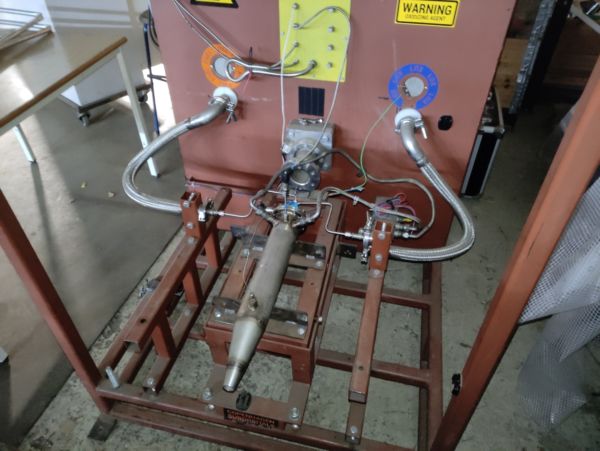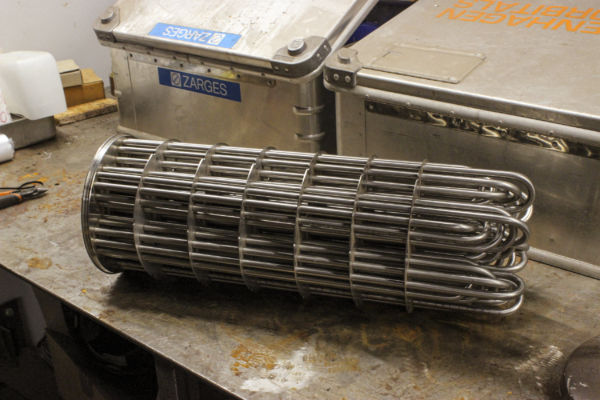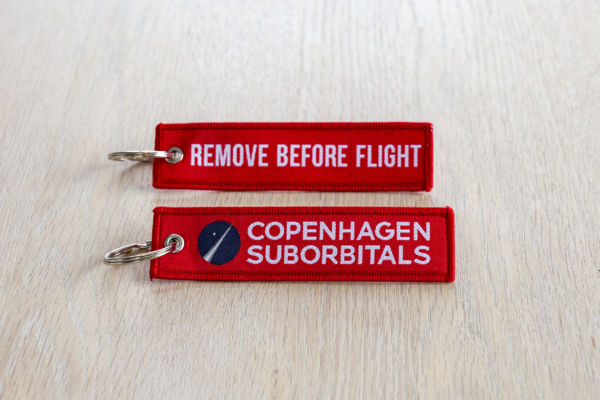On Saturday, July 26th, Copenhagen Suborbitals will conduct the first test of a brand-new rocket burner – a key step in developing the pressurization system for our next-generation rocket, Spica. The test will take place in the large open area on Refshaleøen, near Refshalevej 183A, a location known to many from major events like CopenHell. Spectators and press are warmly invited to attend and witness this important milestone.

We’ll begin preparing the test area around 9:00, and recommend that visitors arrive around 12:00, so we can guide you to the safe spectator zone. The first ignition is expected around 13:00 – but as always with rocket science, timelines are fluid.
What are we testing – and why does it matter?
This new burner is the heart of a system designed to produce vast amounts of hot nitrogen gas, used to pressurize the fuel tanks of our Spica rocket. Where other space programs rely on expensive and complex turbopumps, we use pressurized gas to push propellants – liquid oxygen and ethanol – into the engine.

In previous tests, we’ve used gaseous helium for this task. But helium is not only rare – it’s extremely expensive. That’s why we’re now moving to nitrogen, which is both cheaper and more accessible. But using nitrogen introduces new challenges.
To turn liquid nitrogen (at –196°C) into a high-pressure gas (15 bar), we’ve built a custom nitrogen boiler – essentially a rocket engine modified to produce heat, not thrust. We like to call it “a hair dryer on steroids” – roughly equivalent in power output to 300 ordinary hair dryers.
This Saturday’s test marks the first time Copenhagen Suborbitals is using:
- Electric spark ignition, similar to that in car engines.
- Commercial oil burner nozzles for fuel injection.
- A test specifically focused on generating heat rather than propulsion.
How it fits into the rocket
The nitrogen heating system sits at the top of the rocket, just beneath the crew capsule. From this location, it delivers hot gas downward to pressurize the propellant tanks. It’s an elegant solution that replaces heavy hardware and gives us fine control over engine power.

You can think of the system as the rocket’s throttle pedal: by adjusting the pressure, we can control how hard the engine runs. More pressure = more power. It’s a simple, robust system – and a cornerstone of our plan to eventually launch a human into space.
“This is the first step in a new series of tests that will bring us closer to our ultimate goal: sending a person into space. The burner we’re testing is a critical part of the system that enables rocket flight. Without pressurization, there is no launch,” says Mads Stenfatt, spokesperson and crew member at Copenhagen Suborbitals.
What to expect as a spectator
Rocket testing is unpredictable – so prepare for long quiet periods interrupted by short, loud bursts of engine firings, each lasting 10–30 seconds. Due to safety enclosures, you may not see flames, but you’ll definitely hear and feel the power.
Important tips for visitors:
- Bring your own food and drinks
- Dress appropriately for the weather
- Be patient – and follow the instructions from our team on-site
Event details:
Location: Refshaleøen, near Refshalevej 183A
Setup begins: 9:00
Recommended arrival for visitors: 12:00
Expected first test: Around 13:00
Support us
On Saturday, you’ll get a chance to buy our newest merchandise: The updated REMOVE BEFORE FLIGHT key ring:

Prices:
1 piece: DKK 100,-
2 pieces: DKK 150,-
We prefer payment with MobilePay but also accept all major credit cards.
We’re looking forward to welcoming you for a day of noise, science, and progress. This is more than just a test – it’s another step on our long, determined journey toward launching the world’s first amateur-built crewed spaceflight.


